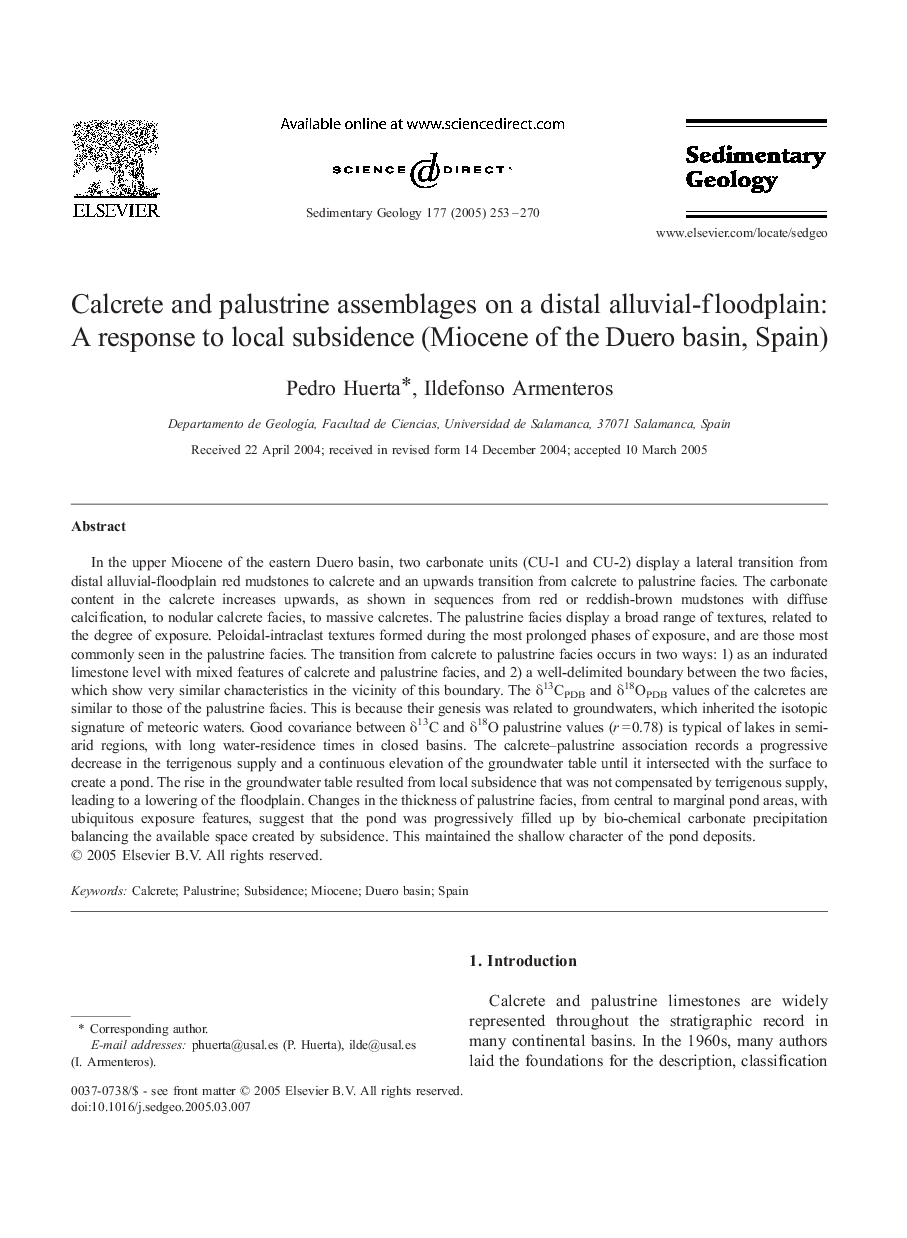| کد مقاله | کد نشریه | سال انتشار | مقاله انگلیسی | نسخه تمام متن |
|---|---|---|---|---|
| 9526141 | 1636204 | 2005 | 18 صفحه PDF | دانلود رایگان |
عنوان انگلیسی مقاله ISI
Calcrete and palustrine assemblages on a distal alluvial-floodplain: A response to local subsidence (Miocene of the Duero basin, Spain)
دانلود مقاله + سفارش ترجمه
دانلود مقاله ISI انگلیسی
رایگان برای ایرانیان
کلمات کلیدی
موضوعات مرتبط
مهندسی و علوم پایه
علوم زمین و سیارات
فرآیندهای سطح زمین
پیش نمایش صفحه اول مقاله

چکیده انگلیسی
In the upper Miocene of the eastern Duero basin, two carbonate units (CU-1 and CU-2) display a lateral transition from distal alluvial-floodplain red mudstones to calcrete and an upwards transition from calcrete to palustrine facies. The carbonate content in the calcrete increases upwards, as shown in sequences from red or reddish-brown mudstones with diffuse calcification, to nodular calcrete facies, to massive calcretes. The palustrine facies display a broad range of textures, related to the degree of exposure. Peloidal-intraclast textures formed during the most prolonged phases of exposure, and are those most commonly seen in the palustrine facies. The transition from calcrete to palustrine facies occurs in two ways: 1) as an indurated limestone level with mixed features of calcrete and palustrine facies, and 2) a well-delimited boundary between the two facies, which show very similar characteristics in the vicinity of this boundary. The δ13CPDB and δ18OPDB values of the calcretes are similar to those of the palustrine facies. This is because their genesis was related to groundwaters, which inherited the isotopic signature of meteoric waters. Good covariance between δ13C and δ18O palustrine values (r = 0.78) is typical of lakes in semi-arid regions, with long water-residence times in closed basins. The calcrete-palustrine association records a progressive decrease in the terrigenous supply and a continuous elevation of the groundwater table until it intersected with the surface to create a pond. The rise in the groundwater table resulted from local subsidence that was not compensated by terrigenous supply, leading to a lowering of the floodplain. Changes in the thickness of palustrine facies, from central to marginal pond areas, with ubiquitous exposure features, suggest that the pond was progressively filled up by bio-chemical carbonate precipitation balancing the available space created by subsidence. This maintained the shallow character of the pond deposits.
ناشر
Database: Elsevier - ScienceDirect (ساینس دایرکت)
Journal: Sedimentary Geology - Volume 177, Issues 3â4, 15 June 2005, Pages 253-270
Journal: Sedimentary Geology - Volume 177, Issues 3â4, 15 June 2005, Pages 253-270
نویسندگان
Pedro Huerta, Ildefonso Armenteros,